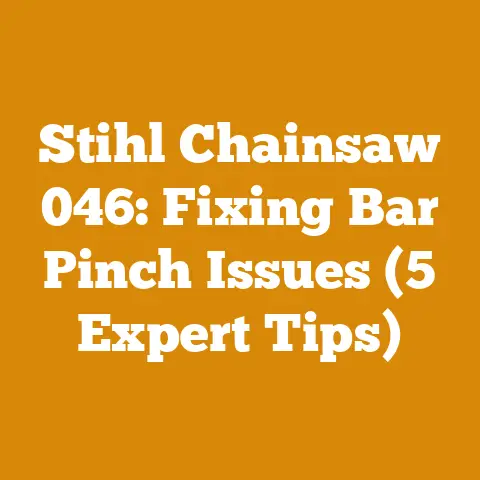How to Get Rid of Privet (Expert Woodcutting Tips for Stubborn Roots)
Let’s talk about privet, that often-unwanted guest in our yards.
Before we dive into eradicating it, it’s worth considering if there’s any resale value.
Honestly, in most cases, there isn’t.
Privet isn’t a prized hardwood like oak or maple.
Its primary value, if any, comes from its use as hedging material, and even then, established hedges are more valuable intact than as processed wood.
So, let’s focus on how to reclaim your yard.
I’ve battled my share of stubborn privet thickets, and I’m here to share my hard-earned wisdom.
Identifying Your Enemy: Privet Varieties and Characteristics
Before you start swinging your axe, it’s crucial to identify the specific type of privet you’re dealing with.
Several varieties exist, each with slightly different growth habits and responses to removal methods.
Common types include:
- Common Privet (Ligustrum vulgare): This is the most widespread species, known for its dense foliage and rapid spread.
- Japanese Privet (Ligustrum japonicum): Often used in landscaping, this variety has larger, glossier leaves than common privet.
- Chinese Privet (Ligustrum sinense): Highly invasive, this species can form dense thickets and is particularly challenging to eradicate.
Key characteristics to look for:
- Opposite leaf arrangement (leaves grow in pairs directly across from each other on the stem).
- Small, white, fragrant flowers that bloom in late spring or early summer.
- Black berries that ripen in the fall (these are spread by birds, contributing to privet’s invasiveness).
- Smooth, gray-brown bark on mature stems.
Understanding these characteristics will help you confirm you’re dealing with privet and tailor your removal strategy accordingly.
Assembling Your Arsenal: Essential Tools and Safety Gear
Removing privet, especially mature plants with extensive root systems, requires the right tools.
Safety is paramount, so don’t skimp on protective gear.
Tools:
- Chainsaw: For cutting down larger privet stems and trunks.
I recommend a mid-sized saw (16-18 inch bar) for maneuverability and power.
My Stihl MS 271 has served me well for years. - Loppers: For cutting smaller stems and branches.
Bypass loppers provide cleaner cuts than anvil loppers. - Hand Saw: A pruning saw or a small bow saw is useful for tight spaces and detailed work.
- Axe or Hatchet: For splitting larger roots and removing stubborn sections.
A splitting axe is ideal for larger roots, while a hatchet is better for precision work. - Shovels and Mattocks: For digging around the root system and loosening the soil.
A mattock is particularly useful for breaking up compacted soil. - Root Saw: A specialized saw designed for cutting roots underground.
These can be invaluable for tackling large, established root systems. - Herbicide Applicator: A garden sprayer or a paintbrush for applying herbicide to cut stems.
- Grub Hoe: For scraping away the topsoil and exposing the roots.
- Wedges: For splitting large roots.
- Pickaxe: For hard or rocky ground.
Safety Gear:
- Eye Protection: Safety glasses or a face shield are essential to protect your eyes from flying debris.
- Hearing Protection: Earplugs or earmuffs are crucial when operating a chainsaw.
- Gloves: Heavy-duty work gloves will protect your hands from cuts and abrasions.
- Long Sleeves and Pants: Protect your skin from thorns, scratches, and potential herbicide exposure.
- Steel-Toed Boots: Provide foot protection from falling objects and sharp tools.
- Chainsaw Chaps: Essential for chainsaw operators to protect legs from accidental cuts.
- Hard Hat: Important when working under trees or in areas where falling debris is a risk.
Takeaway: Gathering the right tools and prioritizing safety will make the privet removal process more efficient and less risky.
The Felling Process: Cutting Down the Privet
Once you’ve assembled your tools and safety gear, it’s time to start cutting down the privet.
Here’s a step-by-step approach:
- Clear the Area: Remove any obstacles around the privet, such as rocks, debris, or other plants.
This will give you a clear working space and reduce the risk of accidents. - Prune Lower Branches: Use loppers or a hand saw to remove any low-hanging branches that might obstruct your work.
This will also improve visibility and access to the main stem. - Assess the Stem: Examine the main stem to determine its diameter and overall health.
This will help you choose the appropriate cutting technique. - Make the Felling Cut: For smaller stems (less than 4 inches in diameter), you can make a single, angled cut with a hand saw or loppers.
For larger stems, use a chainsaw.- Chainsaw Felling:
- Notch Cut: Make a notch cut on the side of the stem in the direction you want the privet to fall.
The notch should be about one-third of the stem’s diameter. - Back Cut: Make a back cut on the opposite side of the stem, slightly above the notch cut.
Leave a hinge of uncut wood to control the direction of the fall. - Felling: Push the privet over in the direction of the notch cut.
- Notch Cut: Make a notch cut on the side of the stem in the direction you want the privet to fall.
- Chainsaw Felling:
- Cut into Manageable Sections: Once the privet is felled, cut the remaining stem into manageable sections for easier removal and disposal.
I usually aim for sections no longer than 4 feet.
Important Considerations:
- Direction of Fall: Always plan the direction of fall carefully to avoid damaging property or injuring yourself or others.
- Lean: If the privet is leaning in a particular direction, factor this into your felling plan.
- Wind: Be aware of wind conditions, as they can affect the direction of fall.
Never fell a tree in high winds. - Bystanders: Ensure that no one is within the felling zone.
Takeaway: Careful planning and execution are essential for safely felling privet.
Always prioritize safety and be aware of your surroundings.
The Root of the Problem: Excavating and Removing the Root System
Removing the above-ground portion of the privet is only half the battle.
The root system, if left intact, will quickly send up new shoots.
Complete eradication requires removing as much of the root system as possible.
- Clear the Area Around the Base: Use a shovel or grub hoe to clear away any soil, leaves, or debris around the base of the privet.
This will expose the root system and make it easier to work with. - Identify Major Roots: Look for the main roots radiating out from the base of the plant.
These are the ones you’ll need to focus on removing. - Excavate the Roots: Use a shovel, mattock, or pickaxe to dig around the major roots, exposing them as much as possible.
This can be a labor-intensive process, especially in compacted soil. - Cut the Roots: Once the roots are exposed, use a root saw, axe, or loppers to cut them into manageable sections.
I often use my reciprocating saw with a pruning blade for this task; it makes quick work of even thick roots. - Pull Out the Root Sections: Once the roots are cut, pull them out of the ground.
You may need to use a shovel or mattock to loosen them further. - Repeat the Process: Continue excavating, cutting, and pulling out roots until you’ve removed as much of the root system as possible.
- Small Root Removal: Even small root fragments can resprout, so I meticulously remove as many as I can find.
A small trowel and a keen eye are essential for this step.
Dealing with Large Root Systems:
- Root Saw: A root saw is invaluable for cutting large roots that are difficult to access with other tools.
- Wedges: Use wedges to split large roots that are too thick to cut with an axe or saw.
- Leverage: Use a long pry bar or a sturdy branch to lever out stubborn root sections.
Takeaway: Thorough root removal is crucial for preventing regrowth.
Take your time and be persistent.
Herbicide Application: The Chemical Option (Use with Caution)
While manual removal is often the preferred method, herbicide application can be a useful tool, especially for large infestations or when complete root removal is impractical.
I always advocate for careful and responsible herbicide use, prioritizing minimal environmental impact.
Types of Herbicides:
- Glyphosate: A broad-spectrum herbicide that is effective on a wide range of plants.
It is absorbed through the leaves and translocated to the roots, killing the entire plant. - Triclopyr: A selective herbicide that is effective on woody plants like privet.
It is also absorbed through the leaves and translocated to the roots.
Application Methods:
- Cut-Stump Treatment: This is the most effective method for privet removal.
Immediately after cutting down the privet, apply herbicide to the freshly cut stump.
This allows the herbicide to be absorbed directly into the root system. - Foliar Spray: This method involves spraying the leaves of the privet with herbicide.
It is less effective than cut-stump treatment, as the herbicide may not be fully translocated to the roots. - Basal Bark Treatment: This method involves spraying the lower portion of the stem with herbicide.
It is effective on smaller privet plants with thin bark.
Important Considerations:
- Timing: Apply herbicide when the privet is actively growing, typically in the spring or summer.
- Weather: Avoid applying herbicide on windy days or when rain is expected, as this can cause the herbicide to drift or wash away.
- Concentration: Follow the manufacturer’s instructions for the correct herbicide concentration.
- Safety: Wear appropriate safety gear, including gloves, eye protection, and a respirator, when applying herbicide.
- Environmental Impact: Be mindful of the potential environmental impact of herbicides.
Avoid spraying near water sources or non-target plants.
My Preferred Method:
I prefer the cut-stump treatment method using glyphosate.
I cut the privet stem as close to the ground as possible and immediately apply a concentrated glyphosate solution to the freshly cut surface using a small paintbrush.
This minimizes the risk of herbicide drift and ensures that the herbicide is absorbed directly into the root system.
Takeaway: Herbicide application can be a useful tool for privet removal, but it should be used responsibly and with caution.
Always follow the manufacturer’s instructions and prioritize safety and environmental protection.
Disposal Options: What to Do with the Cut Privet
Once you’ve removed the privet, you’ll need to dispose of the debris.
Here are some options:
- Chipping: If you have a wood chipper, you can chip the privet branches and use the chips as mulch.
This is a great way to recycle the material and reduce waste.
I use my DR Chipper/Shredder for this purpose; it handles branches up to 3 inches in diameter with ease. - Burning: In some areas, you may be able to burn the privet debris.
Check with your local authorities for any restrictions or permits required. - Composting: Smaller branches and leaves can be composted.
However, avoid composting larger stems, as they may take a long time to decompose. - Landfill: You can also dispose of the privet debris at a local landfill.
This is often the easiest option, but it is also the least environmentally friendly. - Create Brush Piles: In some rural areas, creating brush piles can provide habitat for wildlife.
Important Considerations:
- Invasive Potential: Privet berries can remain viable even after the plant is cut down.
Avoid spreading berries during disposal. - Local Regulations: Check with your local authorities for any regulations regarding the disposal of invasive plants.
Takeaway: Choose a disposal method that is both convenient and environmentally responsible.
Post-Removal Maintenance: Preventing Regrowth
Even after you’ve removed the privet and its root system, it’s important to monitor the area for regrowth.
Privet seeds can remain viable in the soil for several years, and small root fragments can still sprout.
Strategies for Preventing Regrowth:
- Regular Monitoring: Regularly inspect the area for new privet shoots.
- Manual Removal: Remove any new shoots as soon as they appear.
This can be done by hand-pulling or by using a hoe. - Herbicide Application: If regrowth is persistent, you may need to apply herbicide to the new shoots.
Use the cut-stump treatment method for best results. - Mulching: Apply a thick layer of mulch to the area to suppress weed growth and prevent privet seeds from germinating.
- Planting Native Species: Replace the privet with native plants that are adapted to your local environment.
This will help to fill the void left by the privet and prevent it from re-establishing.
Takeaway: Vigilance and persistence are key to preventing privet regrowth.
Regularly monitor the area and take action to remove any new shoots as soon as they appear.
Case Study: My Personal Battle with Privet
I’ve been battling privet on my property for years.
When I first moved in, a large section of my backyard was completely overrun with a dense thicket of Chinese privet.
It was so thick that it was difficult to walk through, and it blocked sunlight from reaching the rest of my yard.
I started by cutting down the above-ground portion of the privet using a chainsaw.
I then spent several weeks excavating the root system.
It was a grueling task, as the soil was compacted and the roots were extensive.
I used a combination of shovels, mattocks, and a root saw to remove as much of the root system as possible.
Despite my best efforts, regrowth was persistent.
I regularly monitored the area and removed any new shoots as soon as they appeared.
I also applied herbicide to the cut stumps of the regrowth.
Over time, I was able to significantly reduce the privet population.
Today, I still find occasional privet seedlings, but they are easily removed.
I’ve replaced the privet with native plants, which have helped to create a more diverse and healthy ecosystem.
This experience taught me the importance of persistence and patience when dealing with invasive plants.
It also reinforced the value of using a combination of manual and chemical control methods.
Advanced Techniques: For the Truly Stubborn Privet
Sometimes, privet is so entrenched that standard methods aren’t enough.
Here are some advanced techniques I’ve used in particularly challenging situations:
- Soil Solarization: Cover the infested area with clear plastic sheeting during the hottest months of the year.
The trapped heat will kill privet seeds and seedlings in the soil.
This method is most effective in sunny locations. - Prescribed Burning: In some cases, a controlled burn can be used to kill privet and other invasive plants.
This method should only be used by experienced professionals and with the proper permits. - Steam Sterilization: Injecting steam into the soil can kill privet seeds and seedlings.
This method is expensive but can be effective in small areas. - Bio-Control Agents: Researchers are exploring the use of bio-control agents, such as fungi and insects, to control privet populations.
This is a promising area of research, but bio-control agents are not yet widely available. - Long-Term Commitment: Remember, privet eradication is often a multi-year project.
Don’t get discouraged if you don’t see results immediately.
Takeaway: Don’t be afraid to experiment with different techniques to find what works best for your situation.
Frequently Asked Questions About Privet Removal
- Q: How long does it take to remove privet?
- A: The time it takes to remove privet depends on the size and extent of the infestation.
A small privet plant can be removed in a few hours, while a large thicket can take several weeks or even months.
- A: The time it takes to remove privet depends on the size and extent of the infestation.
- Q: Is it better to remove privet in the spring or fall?
- A: The best time to remove privet is during the dormant season (late fall or winter) or when the plant is actively growing (spring or early summer).
Avoid removing privet during the hottest months of the year, as this can stress the plant and make it more difficult to kill.
- A: The best time to remove privet is during the dormant season (late fall or winter) or when the plant is actively growing (spring or early summer).
- Q: Can I use vinegar to kill privet?
- A: Vinegar can be effective at killing small privet seedlings, but it is not effective on mature plants with established root systems.
- Q: Will privet grow back after I cut it down?
- A: Yes, privet will likely grow back after you cut it down if you don’t remove the root system.
- Q: What are the best native alternatives to privet?
- A: The best native alternatives to privet will depend on your local climate and soil conditions.
Some popular options include:- American Holly (Ilex opaca)
- Inkberry (Ilex glabra)
- Viburnum species (e.g., Arrowwood Viburnum, Blackhaw Viburnum)
- Serviceberry (Amelanchier spp.)
- Eastern Redbud (Cercis canadensis)
- A: The best native alternatives to privet will depend on your local climate and soil conditions.
Conclusion: Reclaiming Your Yard from Privet
Removing privet can be a challenging but rewarding task.
By following the steps outlined in this guide, you can effectively eradicate this invasive shrub and reclaim your yard.
Remember to prioritize safety, use the right tools, and be persistent in your efforts.
With a little hard work and determination, you can create a healthier and more beautiful landscape.
Good luck, and happy woodcutting!






